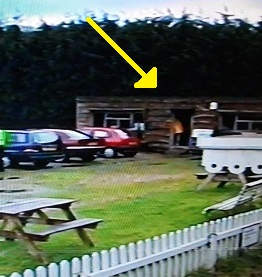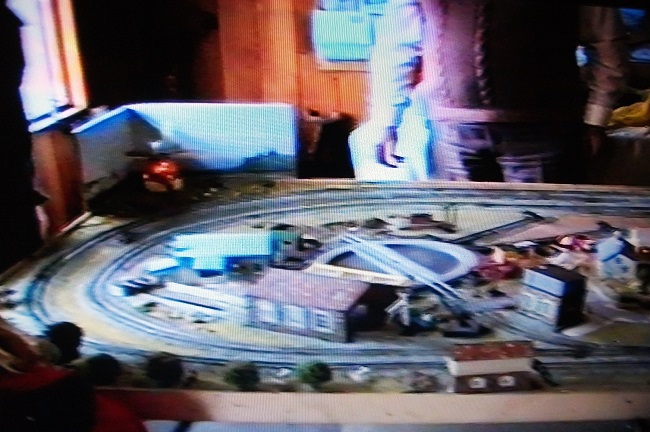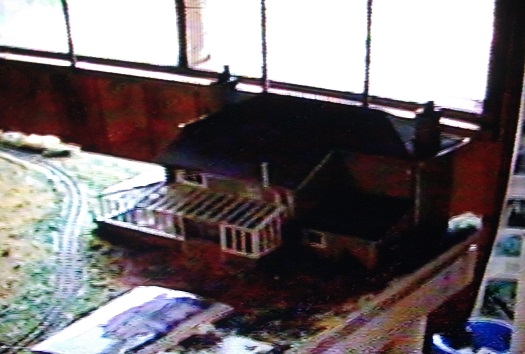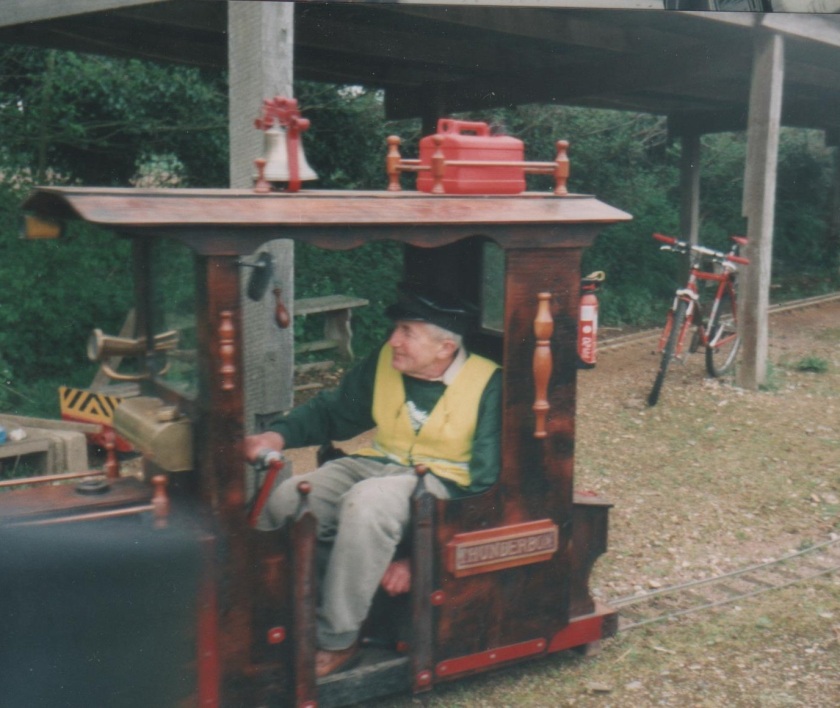
Bob and Thunderbox … please overlook Thunderbox’s impression of an extended range fuel tank loco .
Most, if not all, of the LMLR memorabilia featured a certain locomotive: Thunderbox.

You remember Thunderbox, don’t you? How could you forget?! It looked like a hut with a kennel attached, it had a balustrade on the cab roof (where it was easy to forget you’d left the fuel can, or your cap), and a motor car horn of some vintage. If you don’t remember that, you will remember hearing Thunderbox before seeing it: the engine roared, the bell clanged and the horn parp-parped before departure and at crossings and stations.
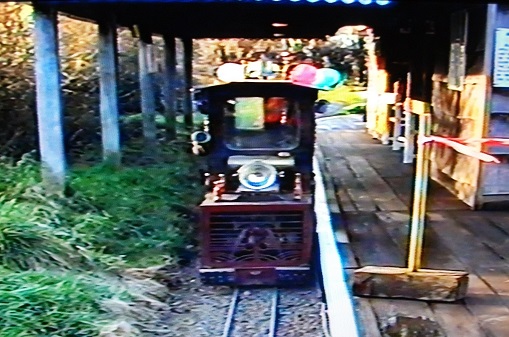
Thunderbox ready for Santa Specials.
You would remember Thunderbox.
Thunderbox was wooden bodied, metal chassised, and had a petrol engine with a mechanical transmission. The loco was carried by one powered two axle bogie underneath the bonnet, and one unpowered two-axle trailer bogie, underneath the cab. These seemed to hold the track quite well. The original post for this, in 2016, had links to the technical details, and a link to the website of Thunderbox’s then home, the Ashmanhaugh Light Railway: sadly this is now closed and we know not of Thunderbox’s location.
We at the LMLR tribute site wishes to tell you about what Thunderbox meant and what it was like to drive.
Thunderbox was Bob’s loco. You could consider that they were one and the same on running days, but, as Bob’s illness progressed, there were times when Bob took a break, or was guard. Nevertheless Bob and Thunderbox were inseparable: perhaps that’s an exaggeration, but most people will understand the sentiment.
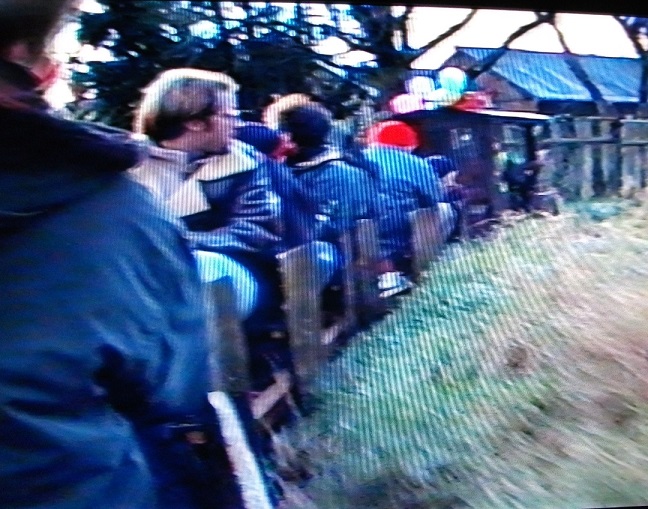
Thunderbox on one of the many Santa Specials
Thunderbox roared: perhaps that’s why Thunderbox was a doubly apt name. Maybe one day we’ll work out how to add audio to this tribute site, so you could appreciate the ‘thrash’ as Thunderbox lifted a fully laden train from the tunnel up to Point Cottage. Occasionally Thunderbox would struggle on that gradient, particularly in wet, leafy conditions on aluminium rail, and then the more athletic or enthusiastic guard would dismount and act as a banker. When you’re pushing a train uphill to keep time, possibly in the wet, the attraction of a loud engine struggling for grip loses its appeal, but revives with nostalgia with the passing of the years.
Thunderbox required strength to drive, or at least wrist stamina. To engage drive, the joystick needed to be pushed forward and held, or pulled backwards and held, and to apply power, the twist grip – like a motorcycle throttle – had to be twisted and held. There were two gears in each direction, as well as neutral. Engage, twist and hold was fine on the downhill stretch when the Old Piggeries line met the main circuit, but required endurance on lifting the train from the bend towards the long climb to and through the tunnel and beyond, and then again once clearing Point Cottage.
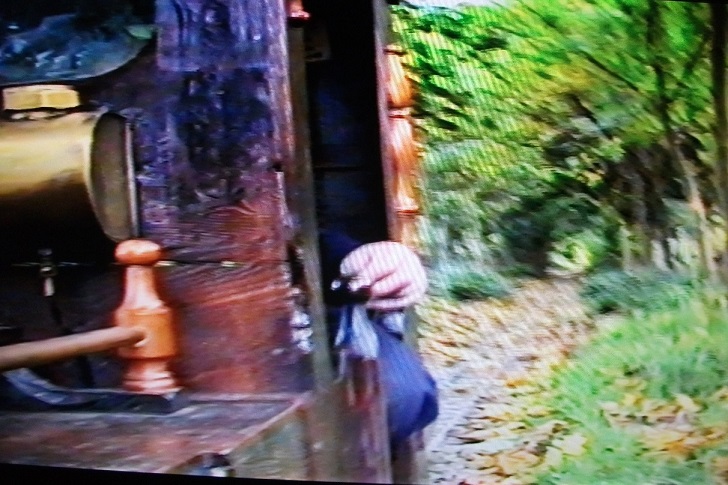
Thunderbox in reverse, downhill – Bob in charge. Notice the leaves on the line.
On every second trip on the Old Piggeries route, Thunderbox hauled the train cab first: this meant backwards. There was a mirror, but this was mainly for checking the train behind during forward running, but for a reasonable look-out, you had to lean out and turn your neck, whilst engaging gear and keeping that throttle twisted. Furthermore, the long descent from the junction to the bend leading to the tunnel could be exciting as we had no continuous brake: Thunderbox had a handbrake and careful drivers. After the long coast down to the curve, Thunderbox would ‘open up’, and roar towards the tunnel, clanging, parping, and then roaring away up towards Point Cottage, maybe exchanging engine greetings with Hotspur in the later years, as the Romulus passed by in the opposite direction where the Paddock line came close to the main circuit.
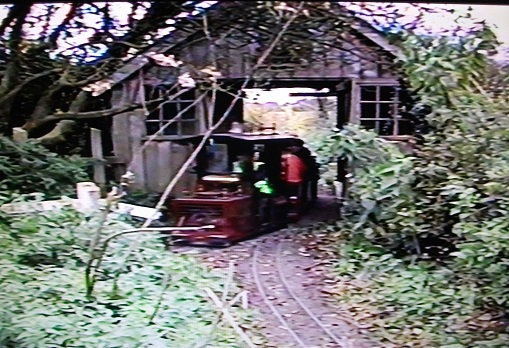
Thunderbox lifts another Old Piggeries train from Point Cottage.
Point Cottage had the train operated points: Thunderbox took the ‘Lost Line’, which meant pushing the point lever forwards. A practiced or skilled driver could do this under motion, although this was a more awkward procedure in reverse, and the Lost Line curved to the right and continued to rise briefly. The Vine Cottage route required drawing the lever backwards, all fine if you had power to spare, as had Sir Mathew Pilgrim or Ben, although maybe those crews would wish to disagree.
Occasionally Thunderbox was sick. Sometimes the bigger locos were required for traffic levels. Sometimes Bob wasn’t there. Much as Ben, Sir Mathew, The General and Hotspur were all LMLR locos, as were the crews, Thunderbox was the LMLR’s talisman, the LMLR’s symbol.
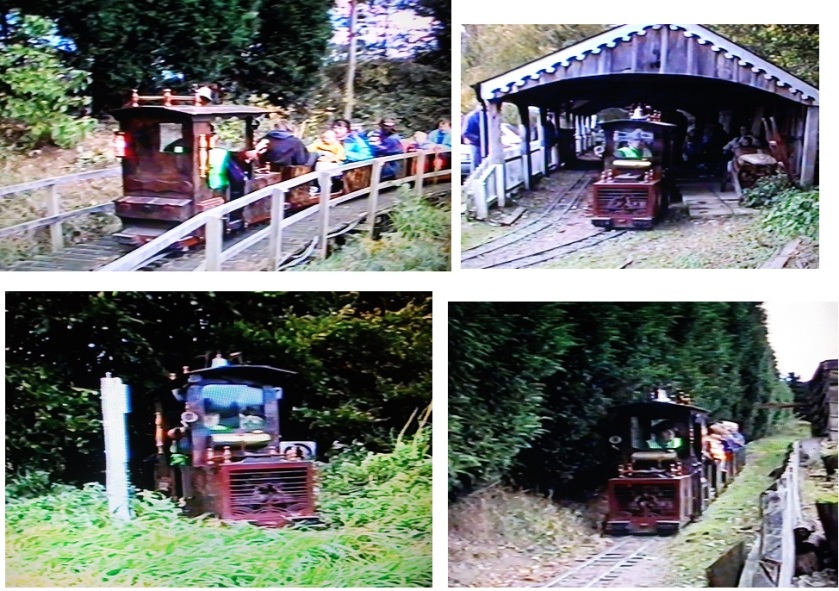
Screen shot tableau – clockwise from to left: Thunderbox cab first with a well loaded train on the Trestle Bridge, Thunderbox departs The Old Piggeries, Thunderbox passing the model railway shed heading back to The Old Piggeries, Thunderbox passing the colour llight protecting the junction just before Melton Wood Junction.
I drove Thunderbox on occasion, I think at least once – memory fades or becomes obscured with time. I can vouch for engaging the gear, and keeping the throttle twisted, and the fast descent, and the roar of the engine! Bob might have been my guard that day, and it was good for Bob and the public to meet when clipping tickets, as with Bob driving (and an efficient guard, or so we brag) there was little time during a busy running day to chat.
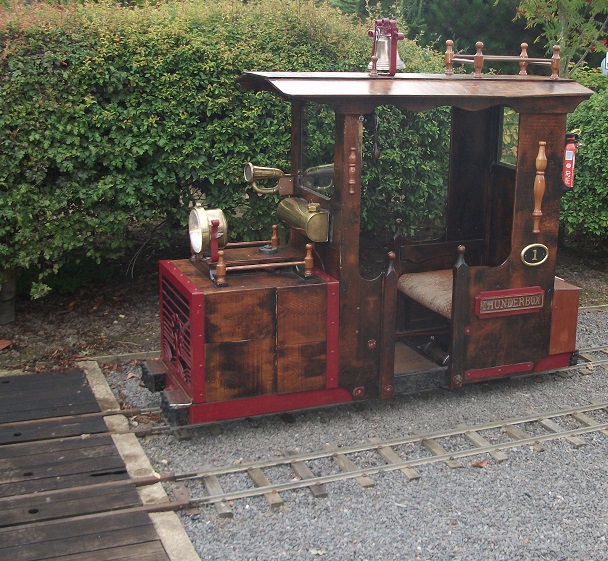
Thunderbox resting at Ashmanhaugh. Notice the ALR number.
After closure, Thunderbox found a new home. Eventually we went to see it. We gave Thunderbox a big hug; it was just like seeing an old friend. We doubt that there are any gradients for some ‘thrash’, for some audio delight from the power unit, but perhaps that’s for the best – Thunderbox gave everything on those climbs, and maybe a relatively flat track would be a better place to enjoy Thunderbox as a machine, and prolong its chance to bring pleasure to rail fans of all ages.
To conclude this tribute to Thunderbox, there is just one last thing: one day Bob said to me, and you’ll have to imagine Bob’s gentle Norfolk accent here, “do you know why it’s called Thunderbox?” On saying no, Bob lifted the driver’s seat cushion to reveal a wooden seat with a hole in it. Underneath the hole, was a white, probably porcelain bowl, about the size of a soup plate, and the depth of a basin. “That’s why it’s Thunderbox” chuckled Bob, although we can’t remember if Bob called Thunderbox he, she or it.
Lest it be unclear, Thunderbox’s structure incorporated a commode. Or did it? Was this an impish sense of humour to include the pot or, although thankfully never used (we hope), perhaps it was unique: unlike most, maybe all, 7¼” railways, at least one of our trains had a toilet. If only we’d thought of an at seat trolley service… .
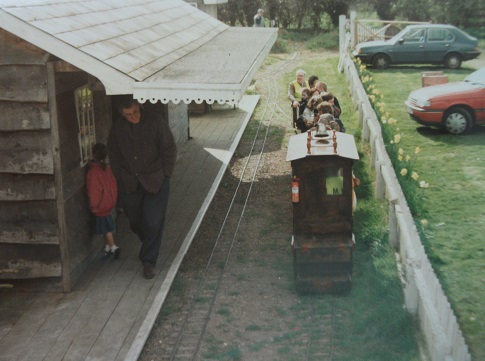

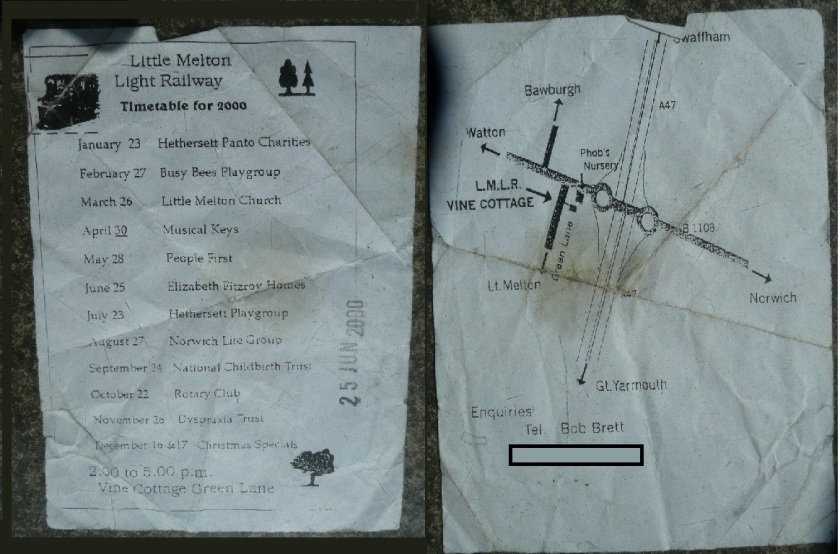
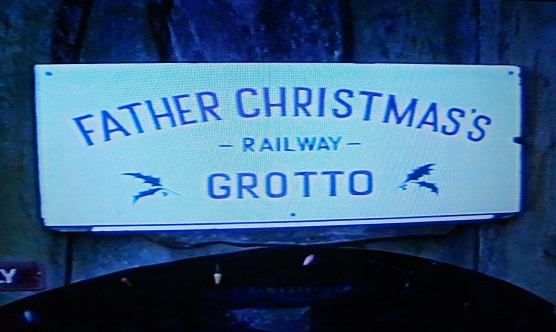
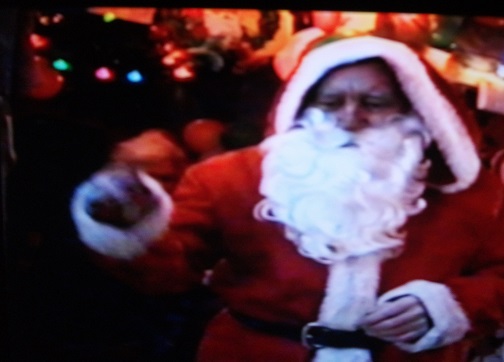
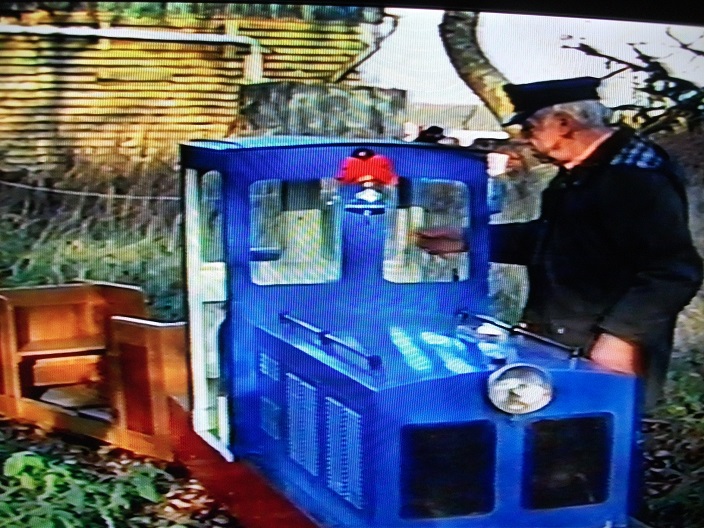
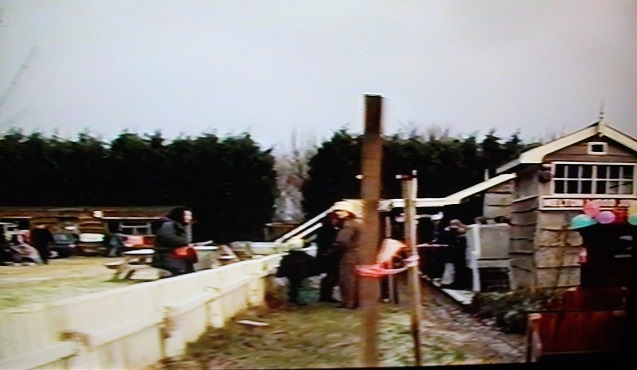


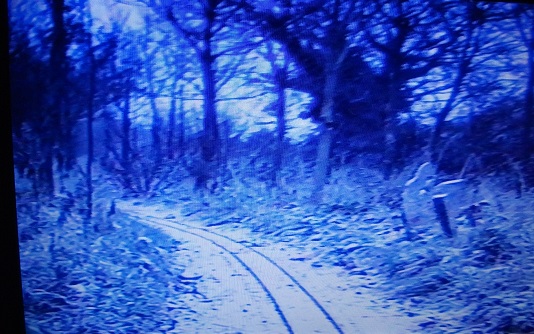
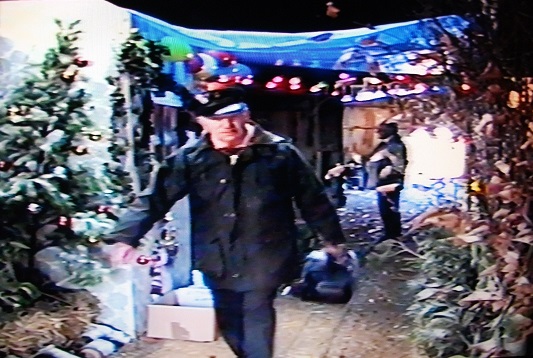
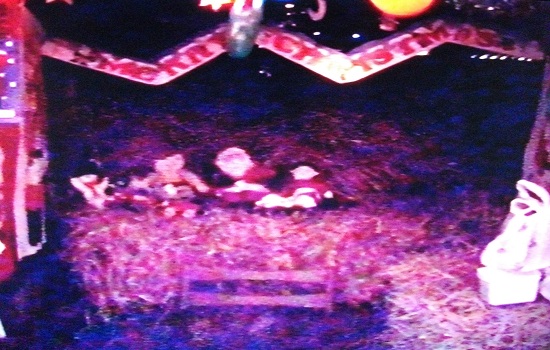
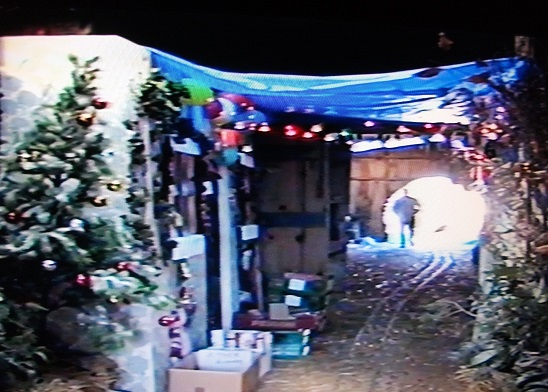
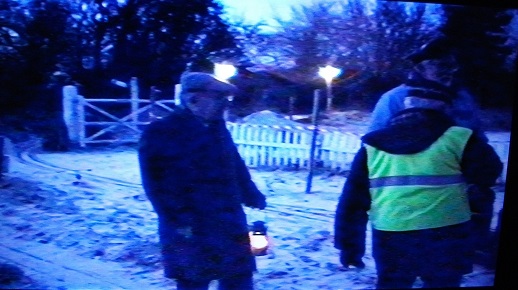
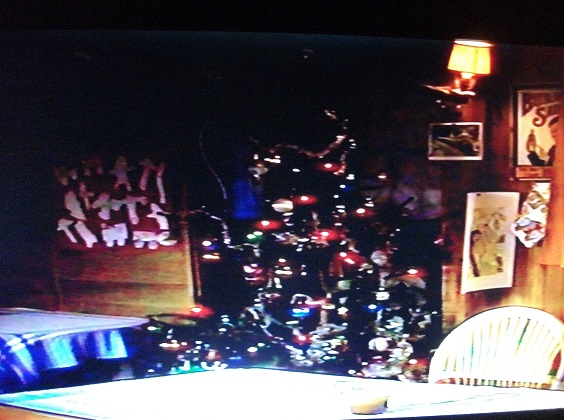
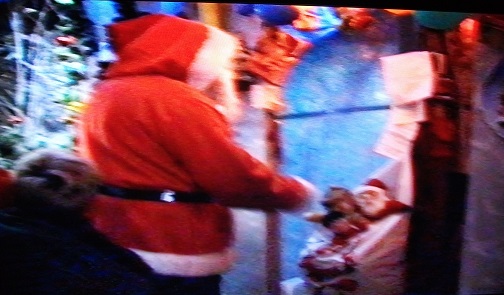
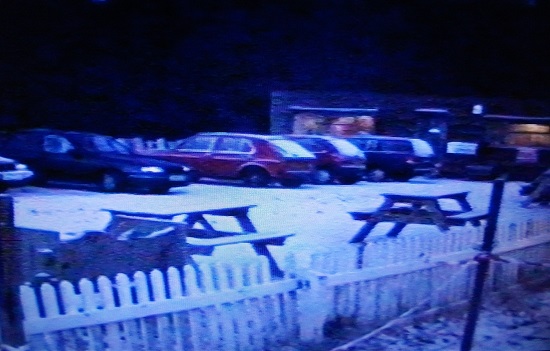
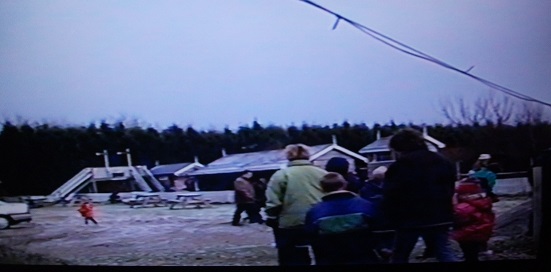

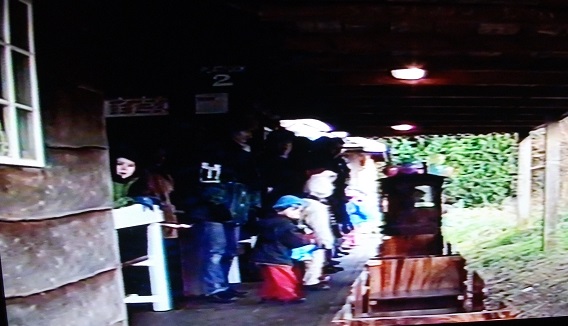

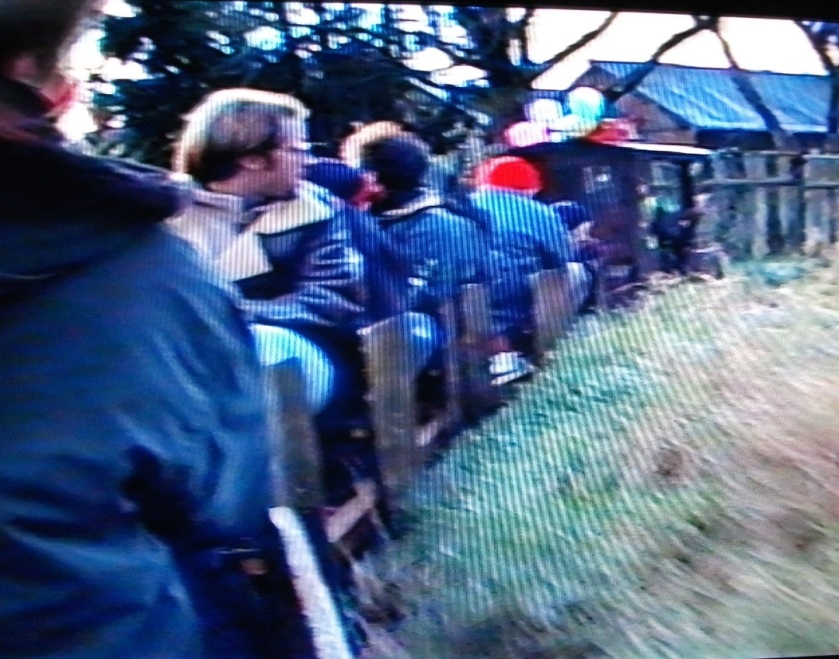
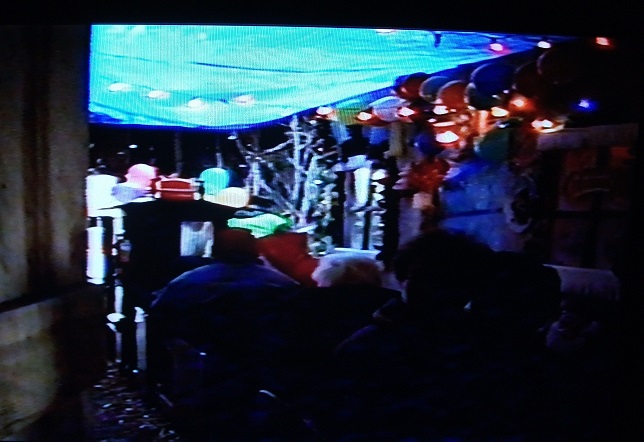
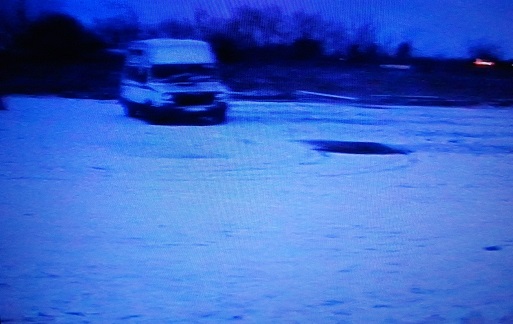


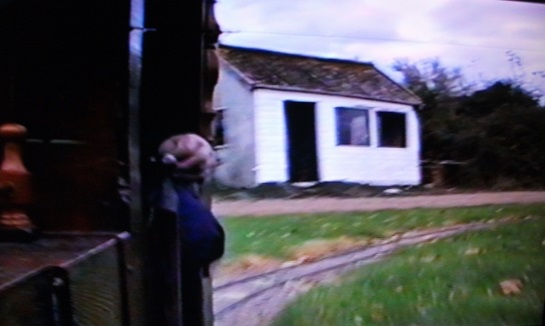

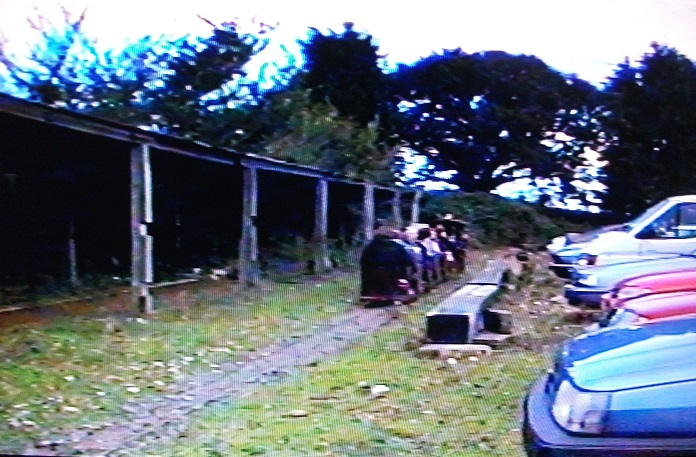
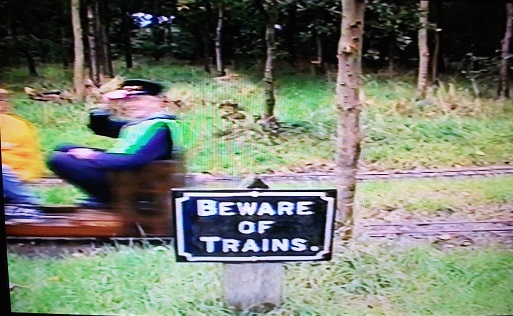
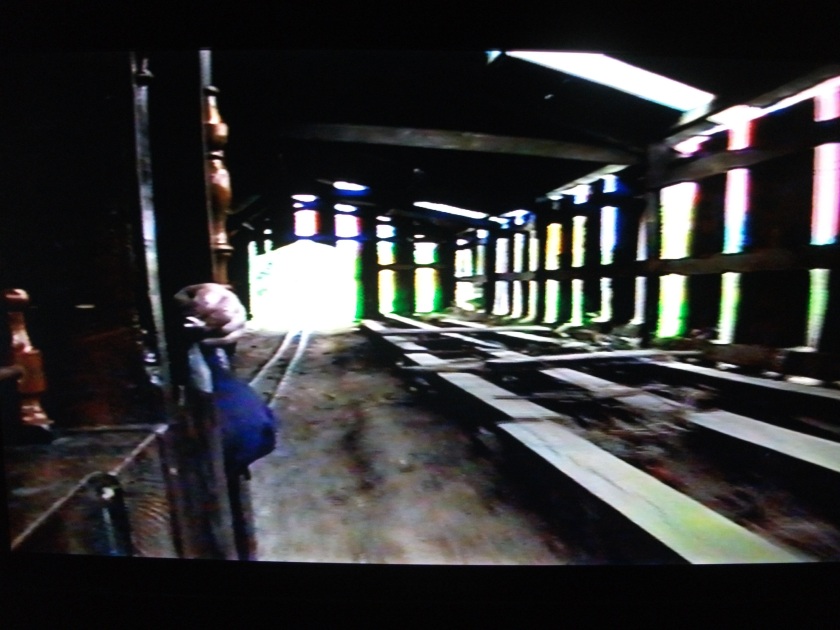


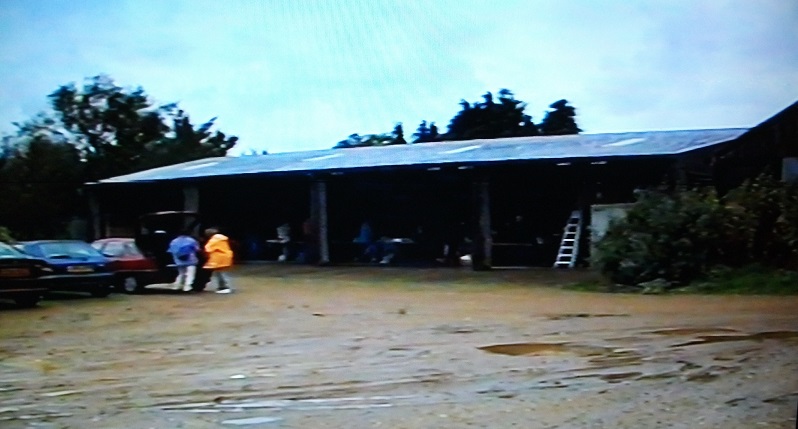
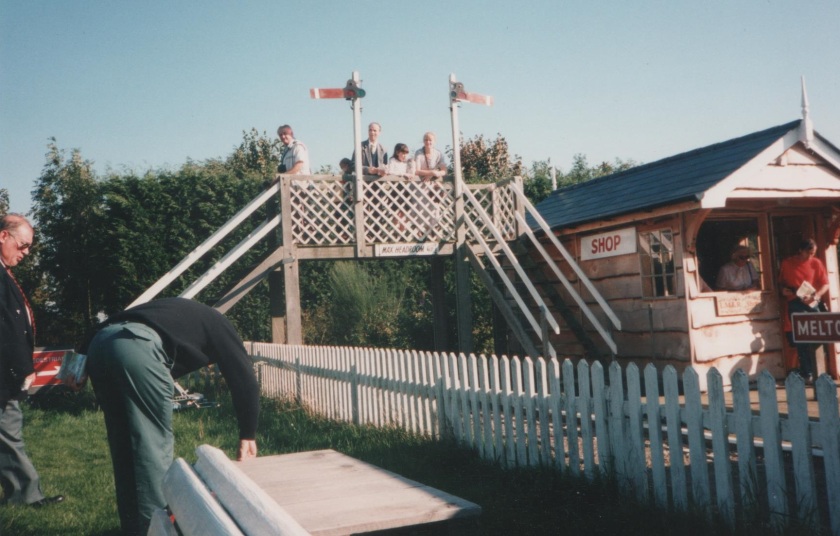
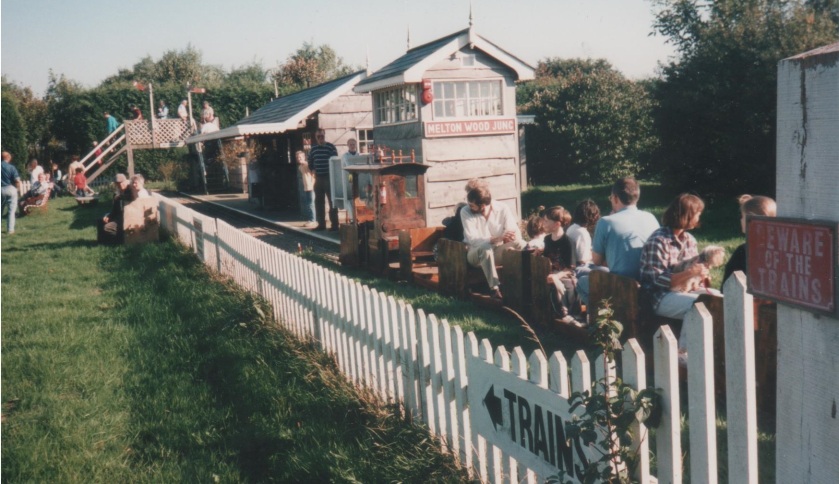
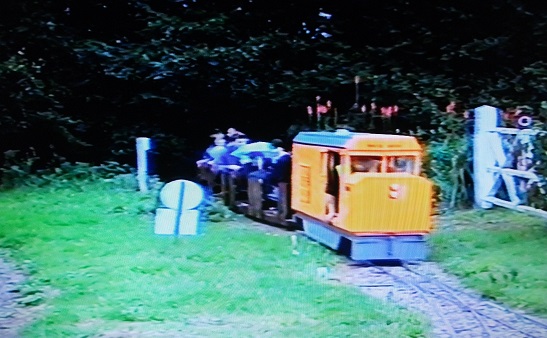
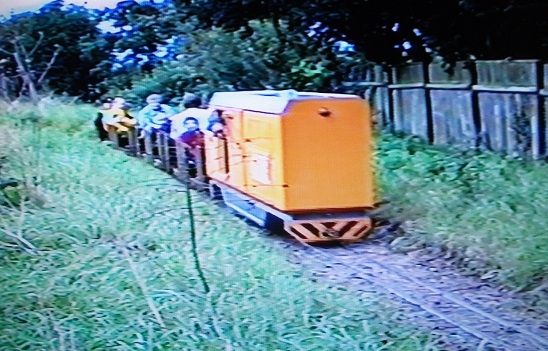
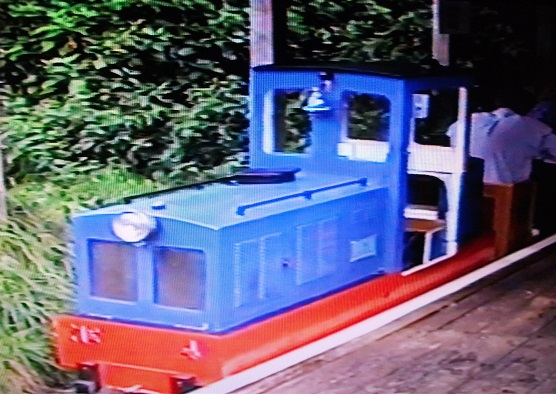

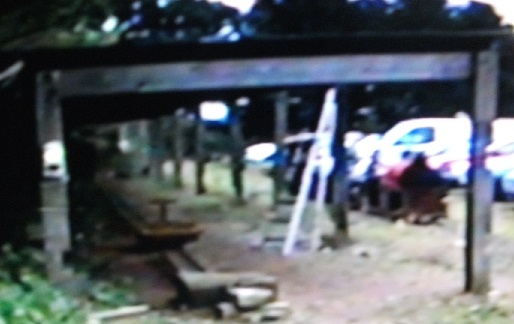
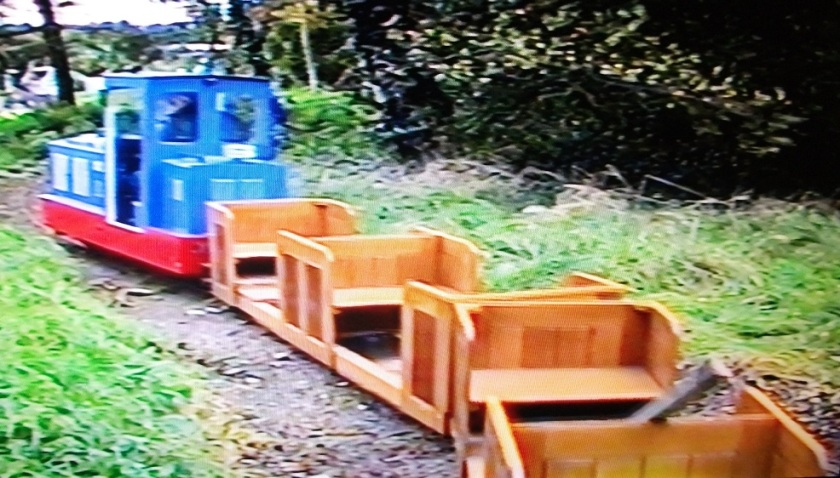

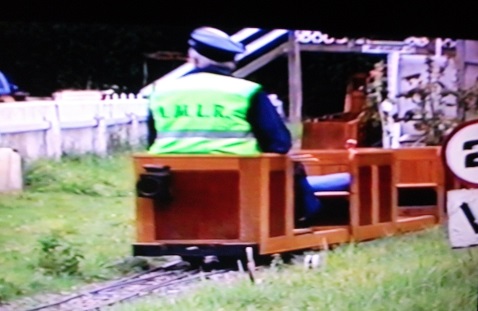
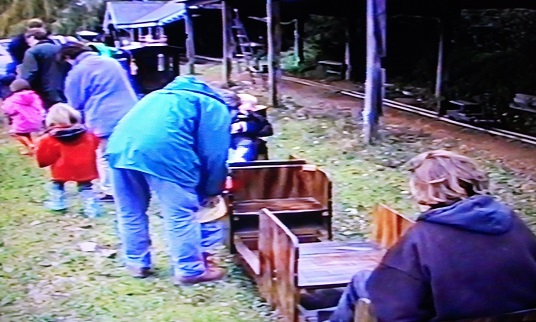
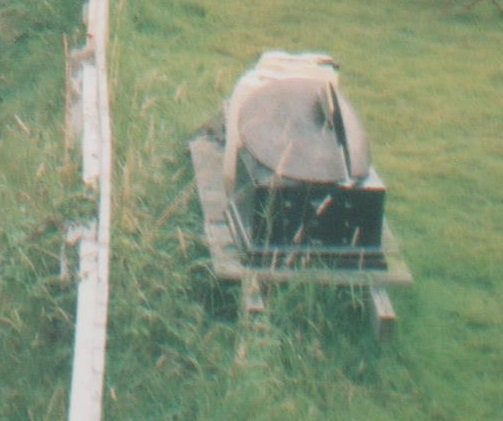


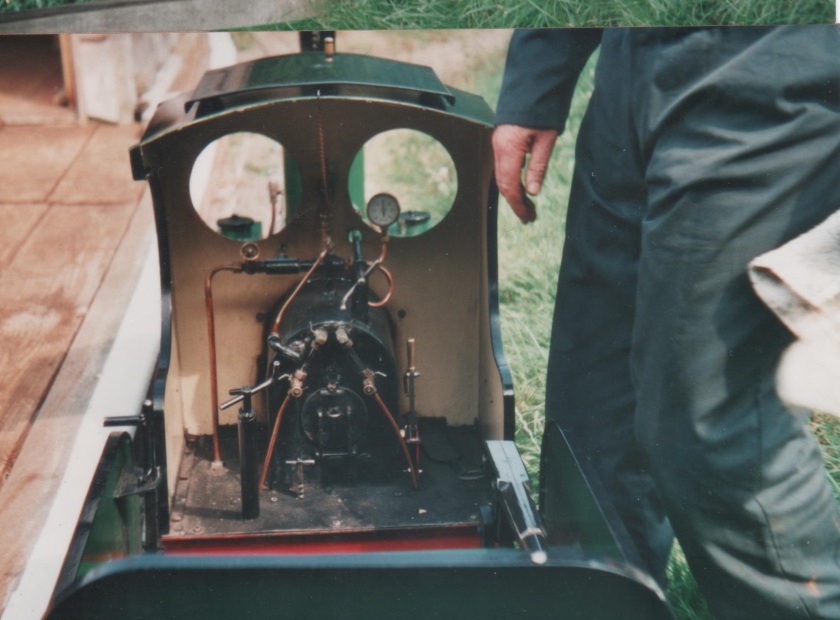
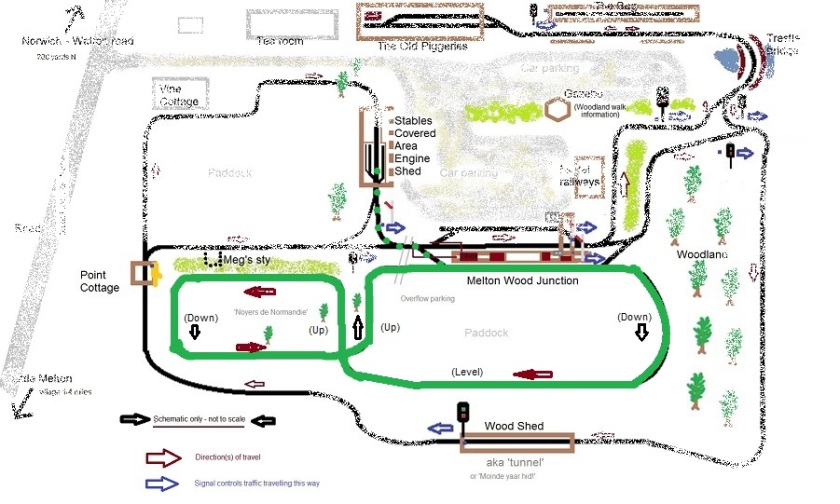
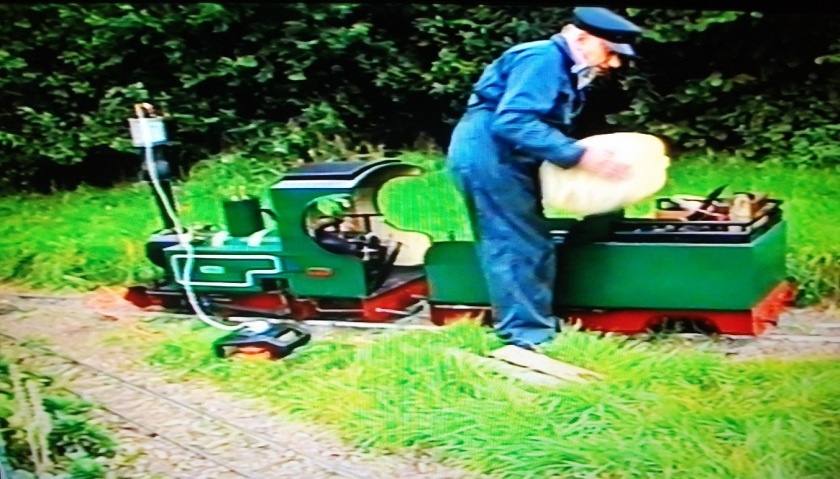
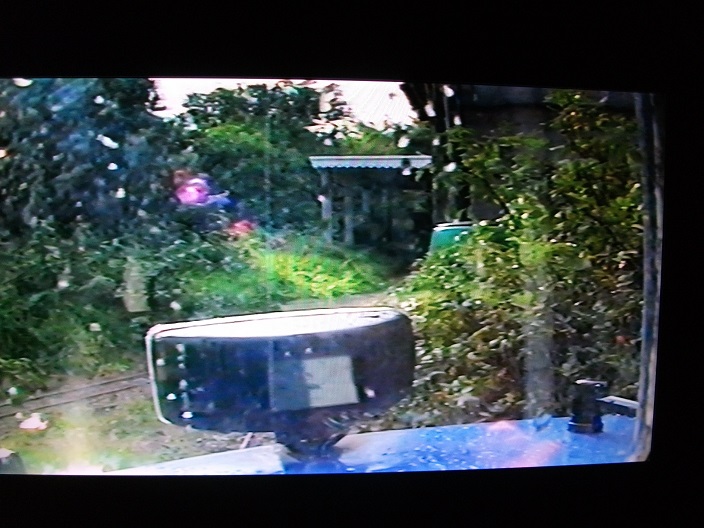

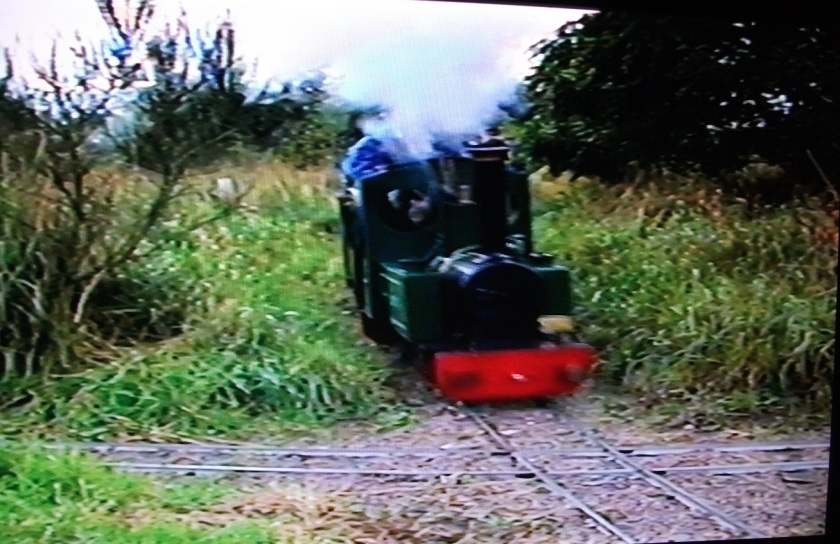
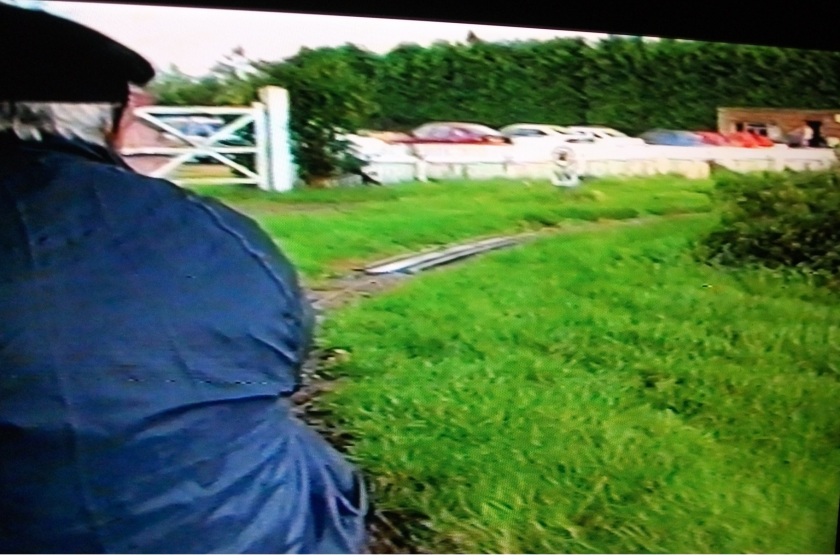
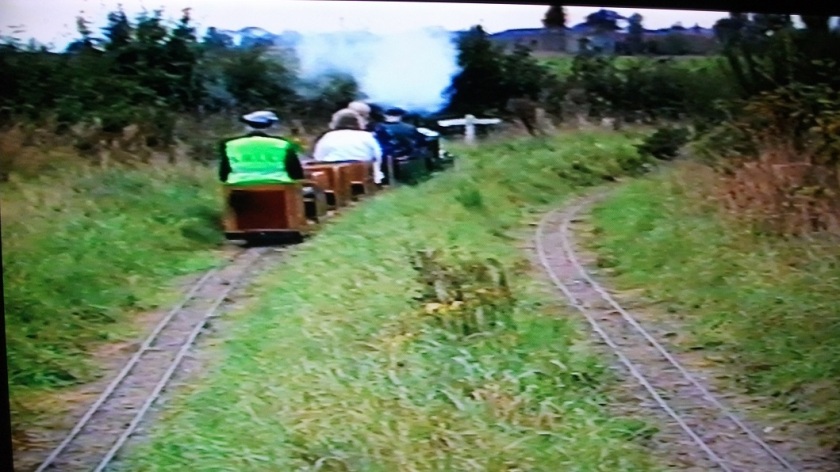
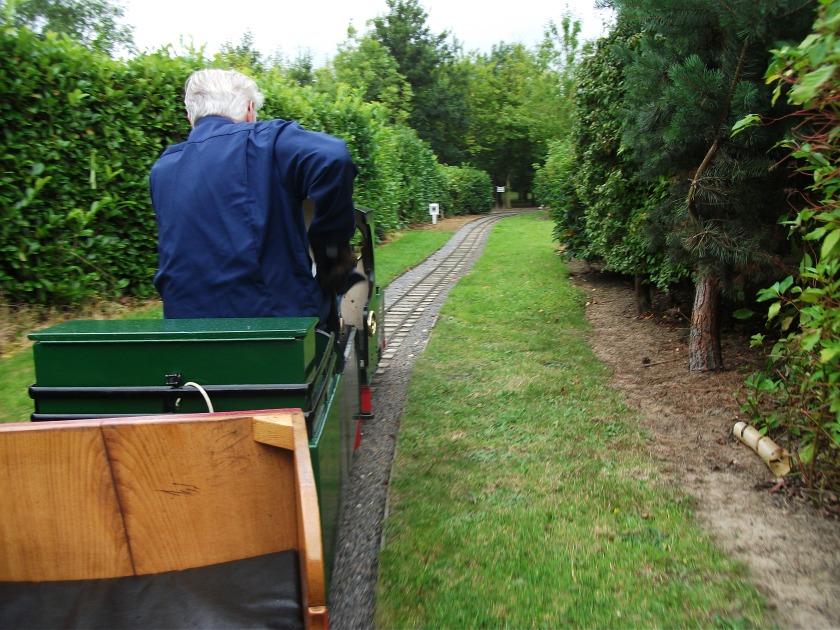
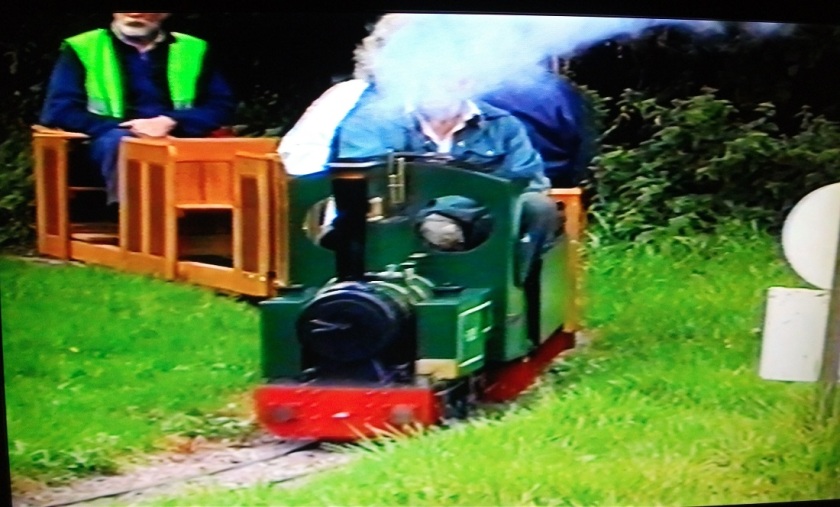
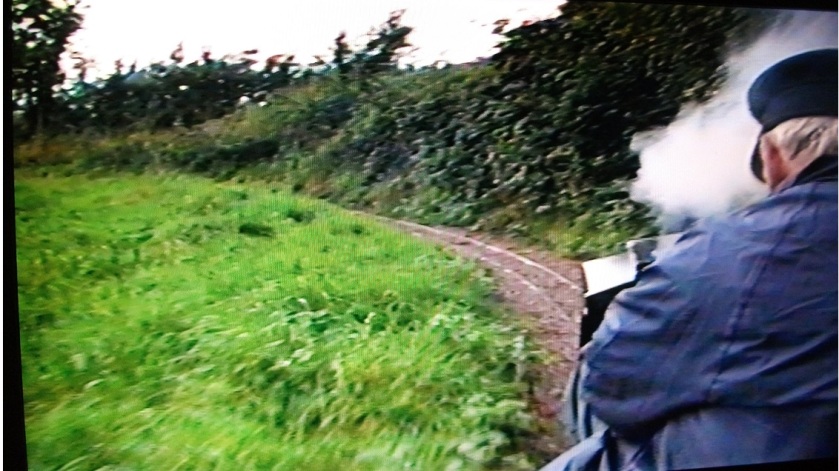
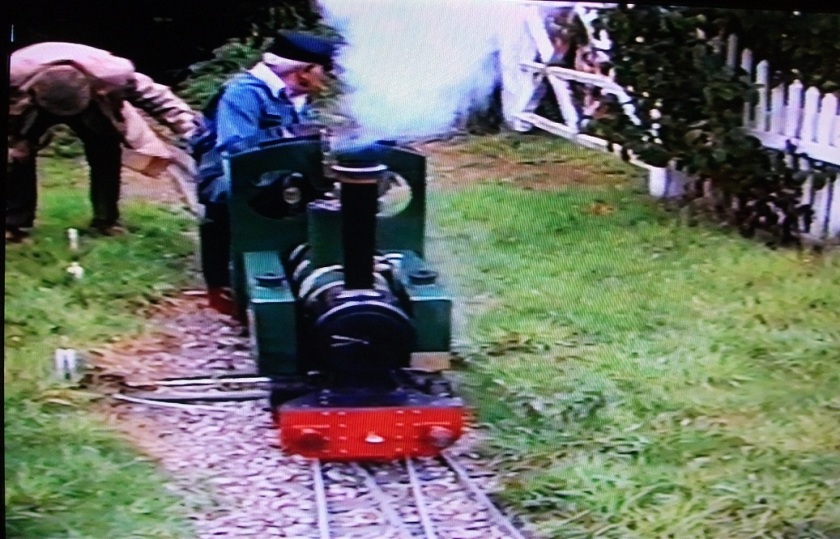
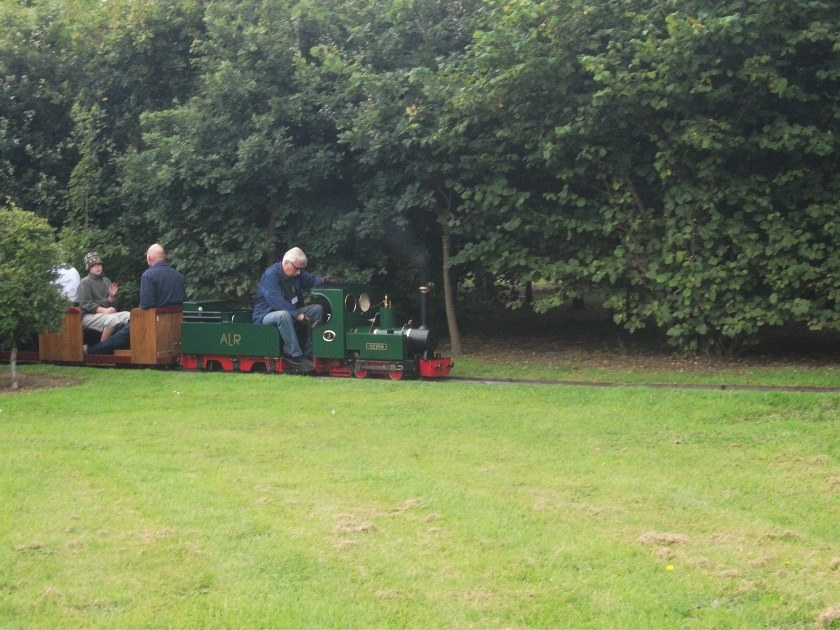
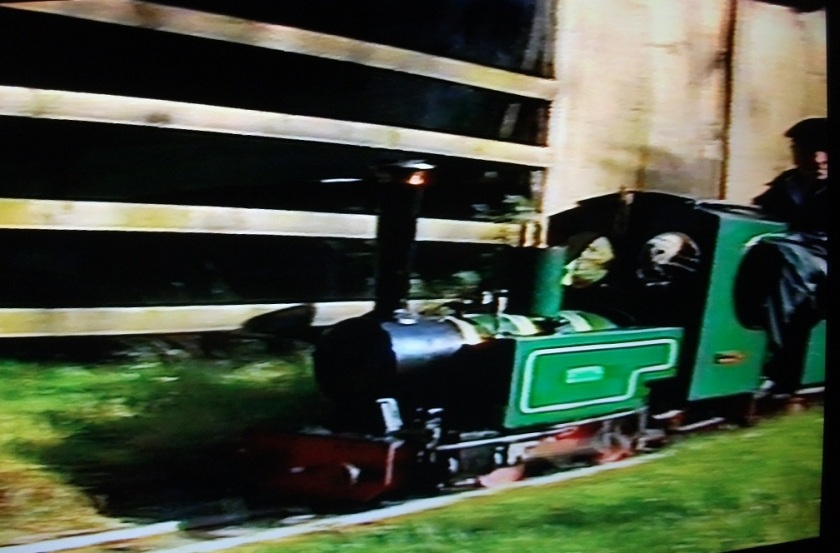
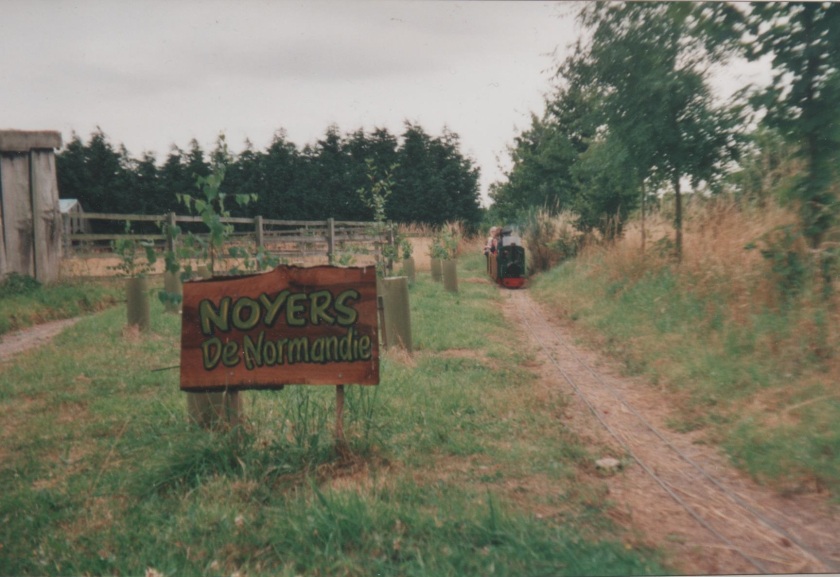
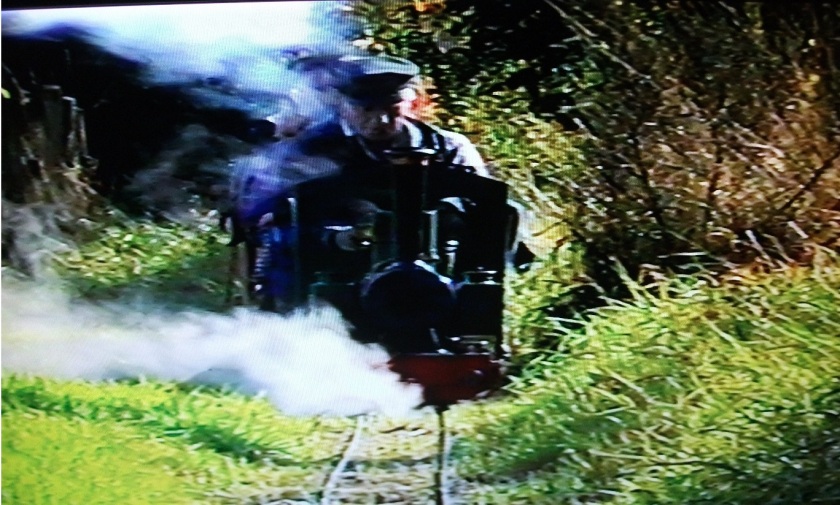
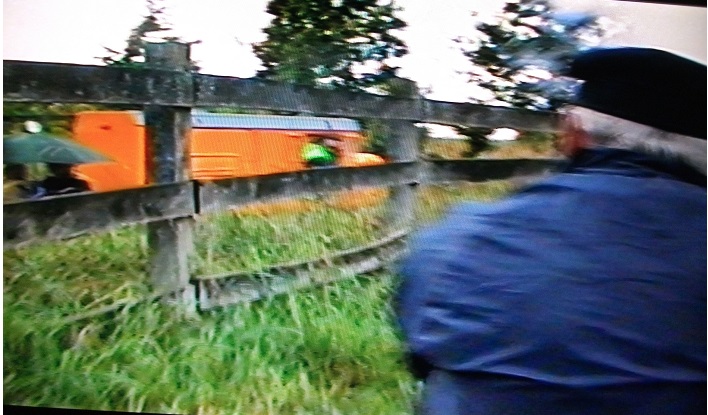
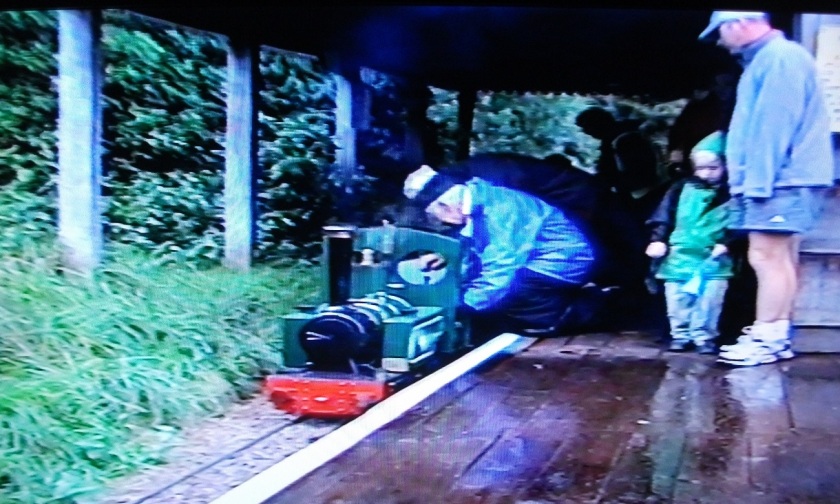

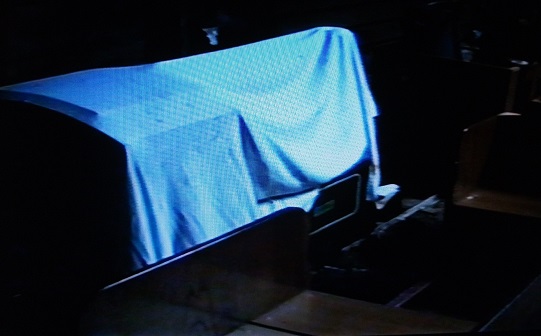
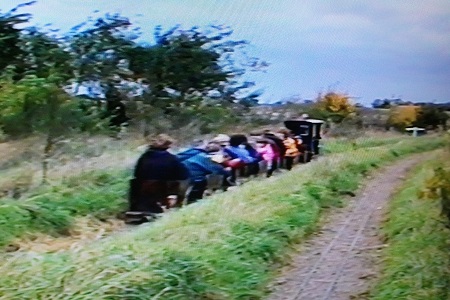
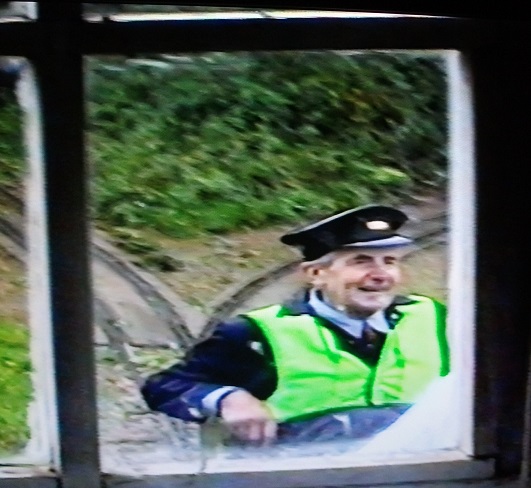
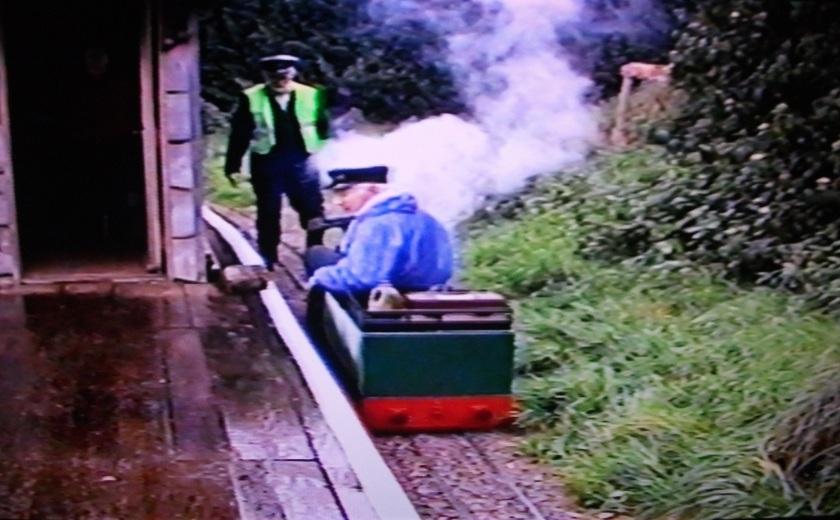

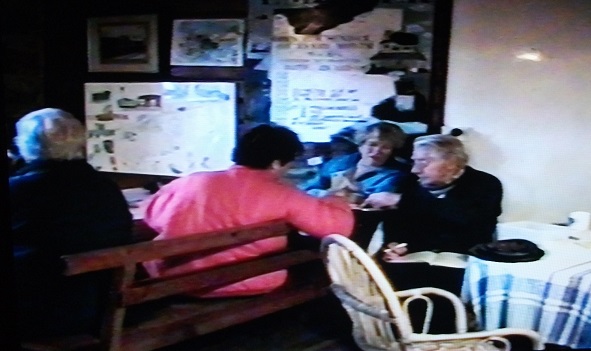
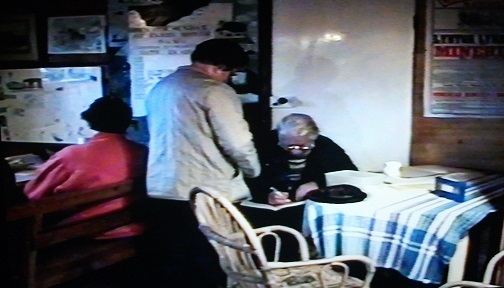
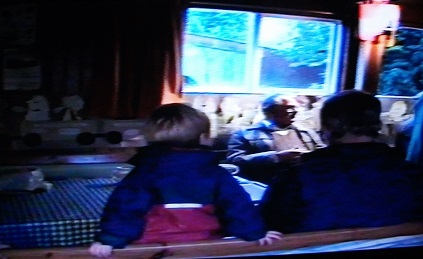
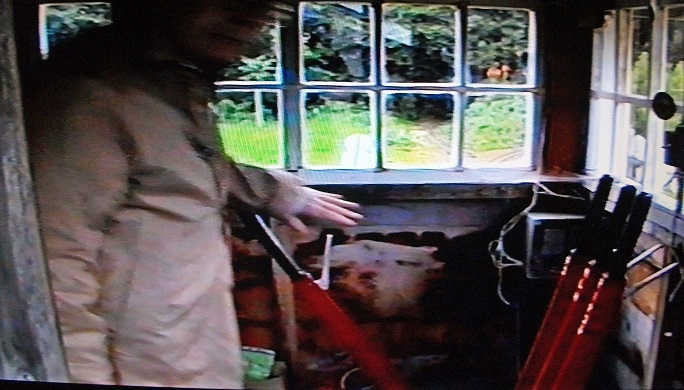
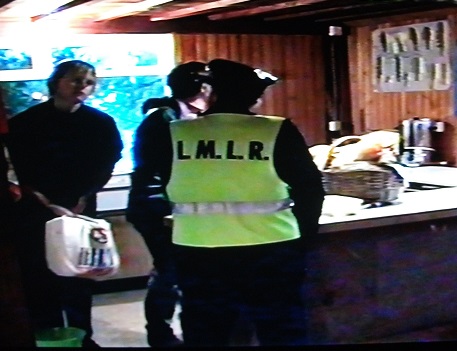
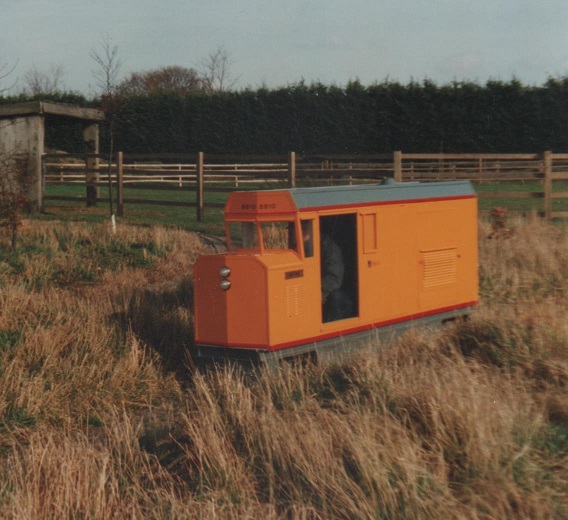
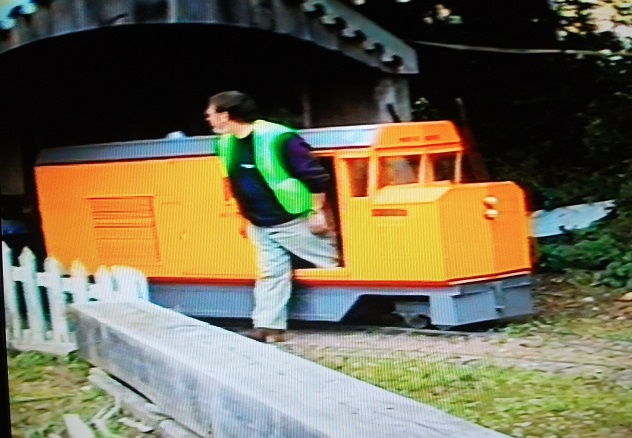
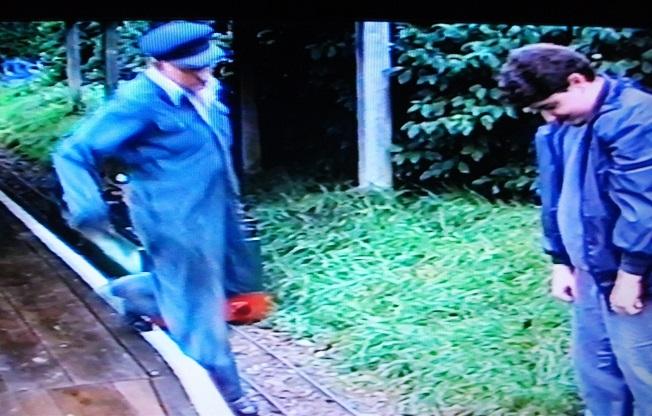
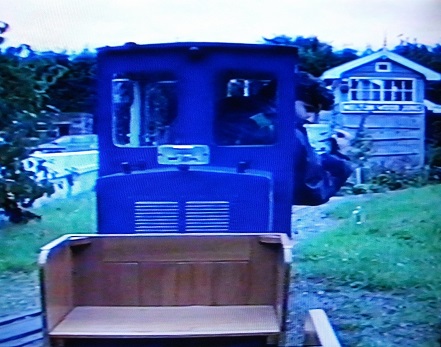


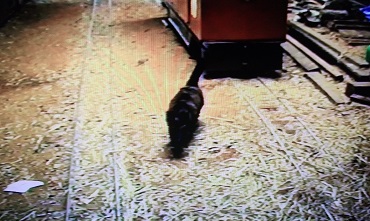

 Another brought a fire engine.
Another brought a fire engine.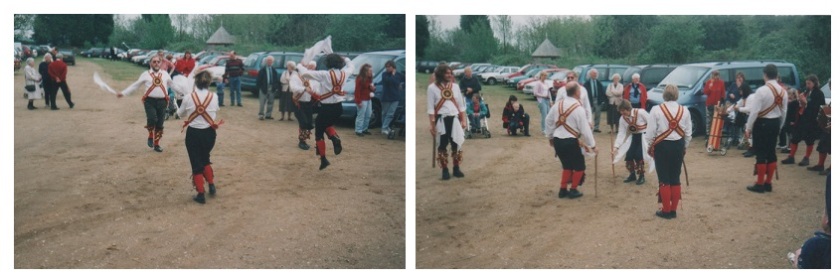
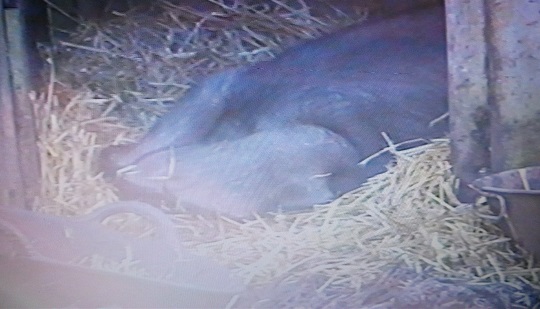
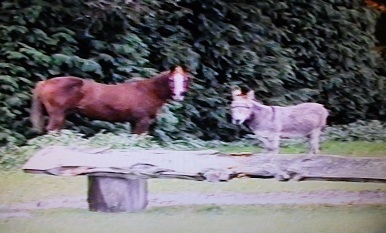


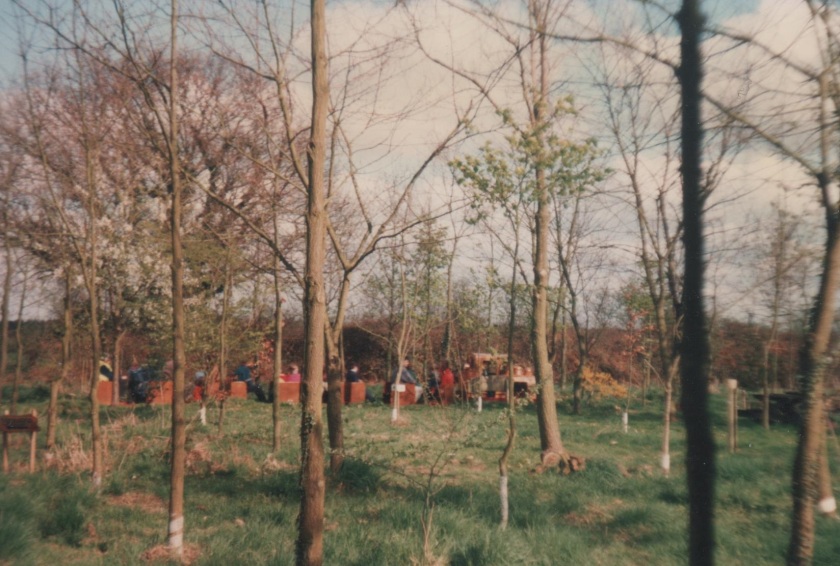
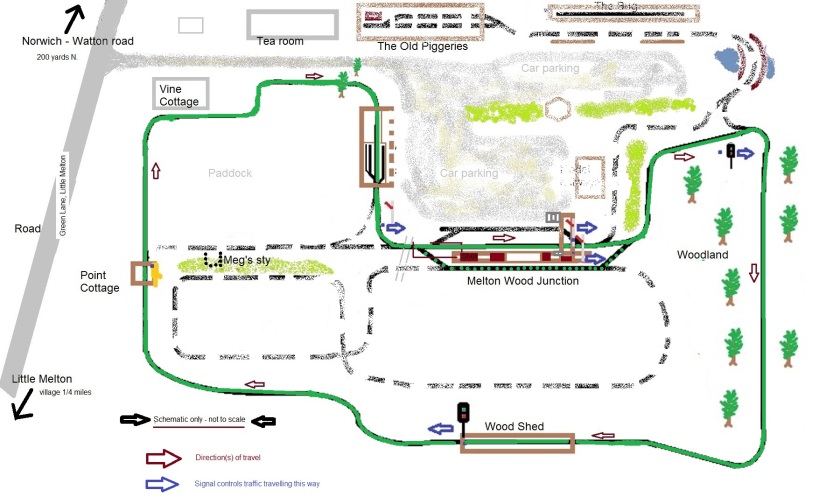
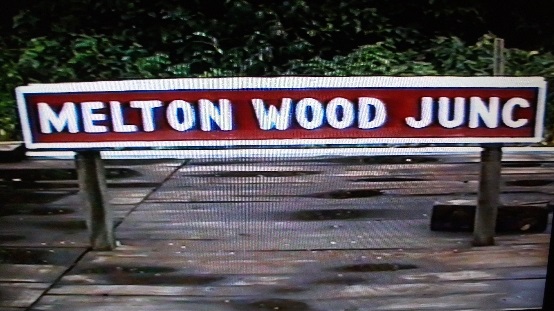 The ‘Vine Cottage’ run duplicated much of the ‘Old Piggeries / Lost Line’ route. Most trains departed the left hand side of the island platform, went straight on at the junction and then bore left, the other side of the leylandi conifers, towards the junction where the route from the Old Piggeries joined, making a rather elongated triangle junction section of track.
The ‘Vine Cottage’ run duplicated much of the ‘Old Piggeries / Lost Line’ route. Most trains departed the left hand side of the island platform, went straight on at the junction and then bore left, the other side of the leylandi conifers, towards the junction where the route from the Old Piggeries joined, making a rather elongated triangle junction section of track.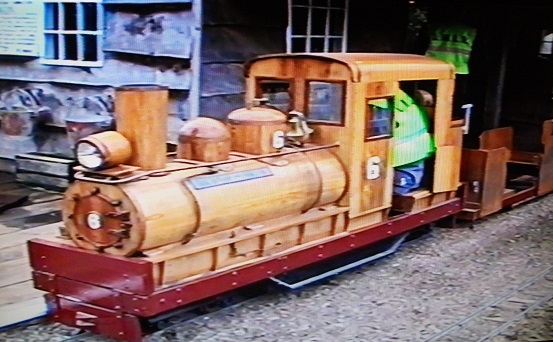
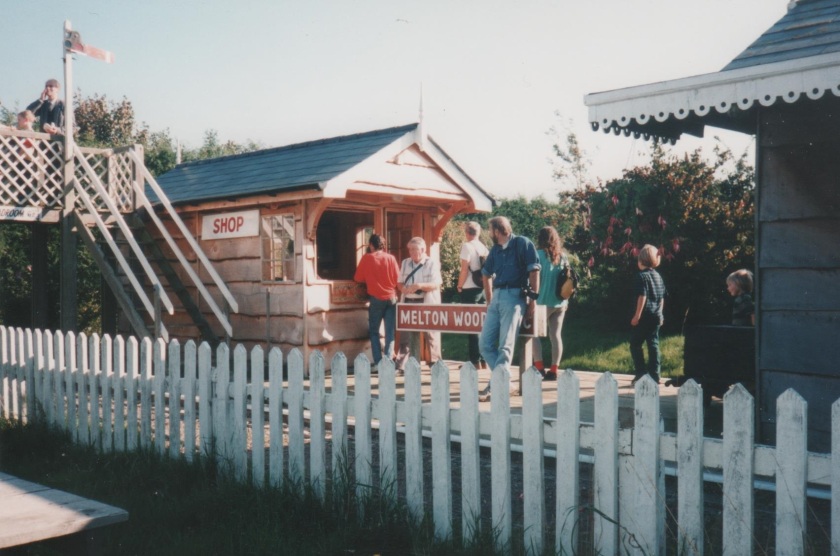

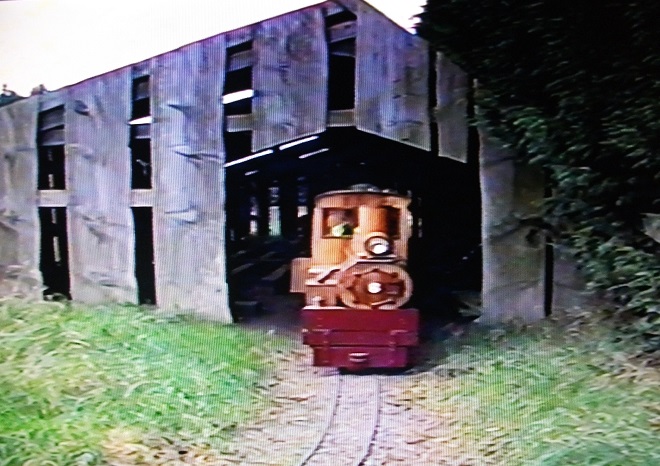
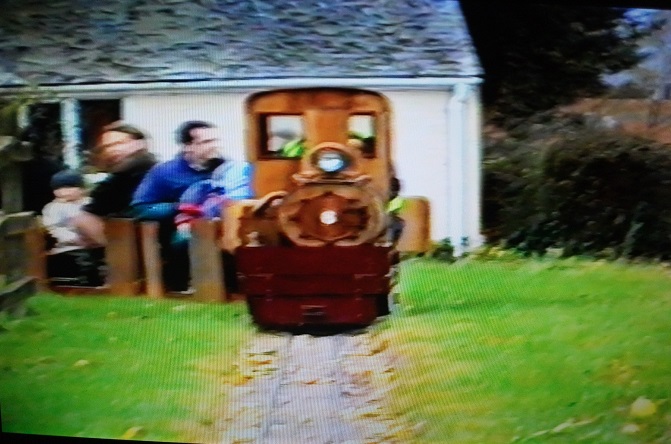
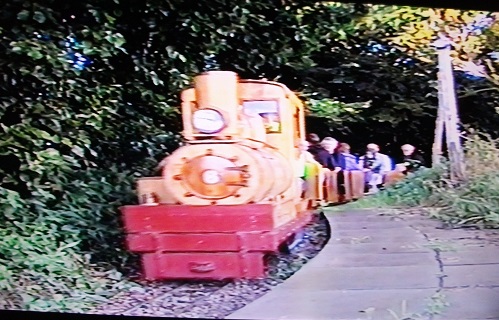
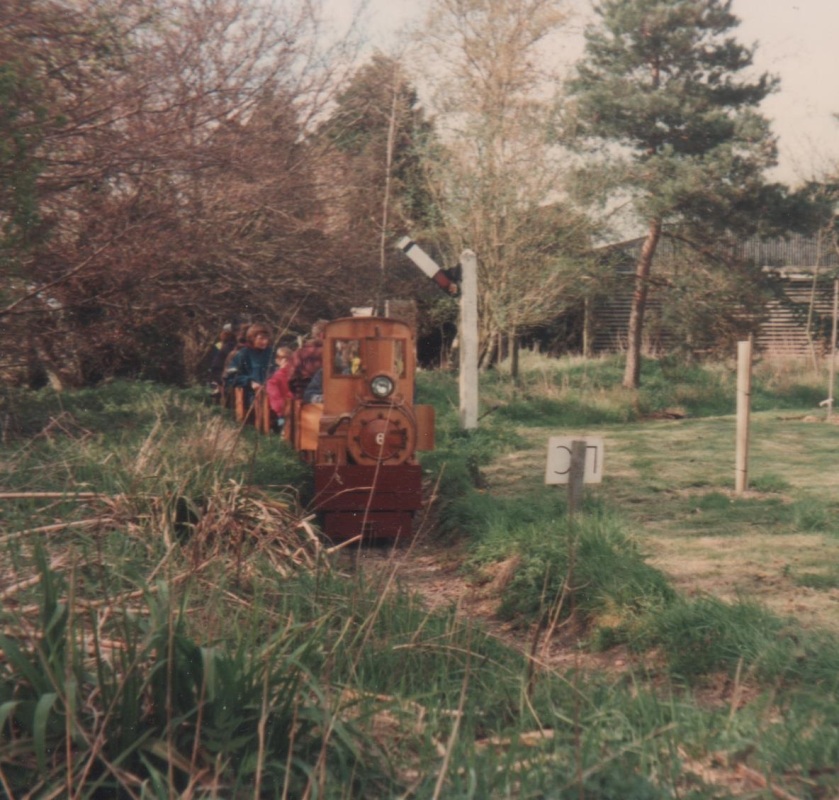
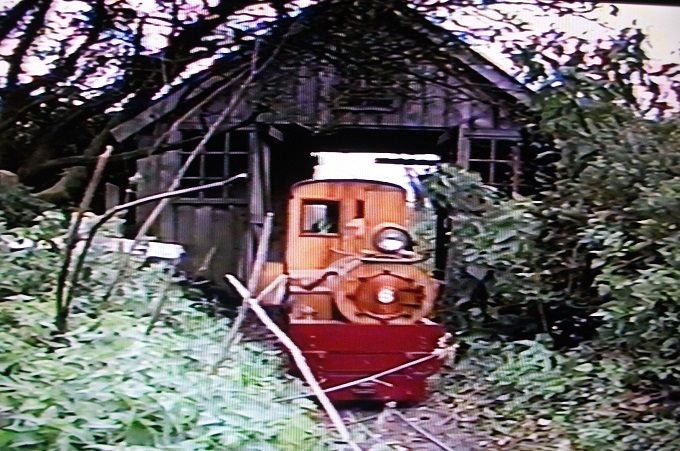
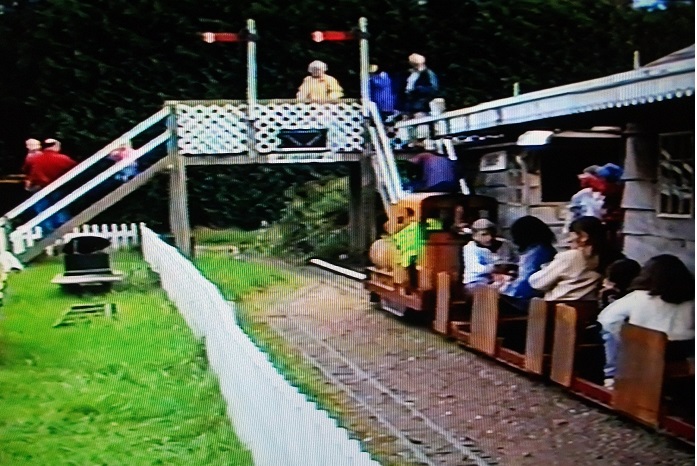
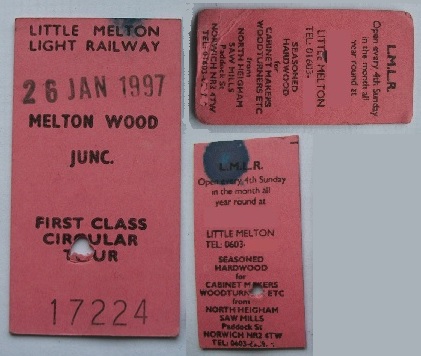 Post script – if you look back at an earlier blog, you’ll see very blurred images of the pictorial LMLR history. Look very carefully and you will see Sir Mathew arriving at the Old Piggeries. Sometimes, then, he did run in reverse. Something we didn’t see – just because it wasn’t written down didn’t mean it didn’t happen. Perhaps he ran off light engine to turn on the triangle? Perhaps not.
Post script – if you look back at an earlier blog, you’ll see very blurred images of the pictorial LMLR history. Look very carefully and you will see Sir Mathew arriving at the Old Piggeries. Sometimes, then, he did run in reverse. Something we didn’t see – just because it wasn’t written down didn’t mean it didn’t happen. Perhaps he ran off light engine to turn on the triangle? Perhaps not.






